A struggling director has a brilliant idea for a comeback picture: he will make a silent movie! And to ensure that his film will be a hit, he plans to cast the biggest stars in Hollywood. However, an evil corporation wants to take over his studio and intends to stop his movie before he can even start it. Mel Brooks provides his signature everything-but-the-kitchen-sink humor.
Home Media Availability: Released on DVD and Bluray.
Shhh!
Next to The Artist, Silent Movie is the modern silent that I get asked about the most. How does a silent film fanatic view this 1976 offering from Mel Brooks? Is it a curio or a worthwhile bit of entertainment?
Well, let’s take a look and see how a movie made almost 50 years after the sound revolution compares to the genuine article.
Did this ever happen to you? Your teacher assigned you an essay on a topic that bored you silly. You racked your brain but the due date swiftly approached and you had nothing. So, you ended up turning in an essay about how hard it was to write an essay about the assigned subject.
That’s kind of like the plot of Silent Movie. It’s a silent movie made in 1976 about the difficulty of making a silent movie in 1976.
Mel Funn (Mel Brooks) is a famous director whose career hit the skids when he descended into alcoholism. Now sober, he is planning a comeback with the assistance of his two best friends, Dom Bell (Dom DeLuise) and Marty Eggs (Marty Feldman). Funn convinces the chief of Big Picture Studios (Sid Caesar) to back the film by promising to deliver top stars.
The bulk of the film is taken up with the star search. I have to give Mel Brooks credit; the stars are an excellent cross section of who’s who in 1970’s Hollywood. Burt Reynolds, James Caan, Liza Minnelli, Anne Bancroft and Paul Newman all have fun playing themselves. There is also a cameo from mime Marcel Marceau, who famously delivers the only dialogue in the film.
The pattern is the same for each star: Funn, Eggs and Bell make their approach, act zany and then land the star’s cooperation. Without a doubt, the showstopper of these sequences is the Anne Bancroft scene.
Bancroft was married to Mel Brooks and they are clearly enjoying themselves with a send-up of both The Graduate and 30’s nightclub scenes. Bancroft is portrayed as a cougar with a band of handsome younger men following her like puppies. Funn, Eggs and Bell pose as a Latin band and sweep up Bancroft in a hilarious dance sequence. Bancroft matches the boys goof for goof and displays her talent for eye crossing.
With his stars in place, Funn is all set to make his movie. However, Big Picture Studios is in danger of a hostile takeover by an evil corporation called Engulf & Devour. The corporate heads mean for Funn to fail and to ensure this, they employ Vilma Kaplan (the always-beautiful Bernadette Peters) to seduce him.
The plan works like a charm and the discovery that Vilma was only pretending to love him sends Funn back to the bottle.
Will our intrepid heroes succeed in making their silent film? Or will Engulf & Devour win the day? See Silent Movie to find out!
Silent Movie is generally considered on of the “other” Mel Brooks movies of the 1970s. It contains his signature humor (a combination of visual puns, surreal setpieces, pop culture references and potty jokes) but it does not have the following of his more famous films.
I have to say that a good portion of the jokes fell flat for me. (Keeping in mind that humor is extremely subjective. One viewer’s hilarious film may equal an evening of boredom for someone else.) Some of the jokes were a little too politically incorrect, some made 70s references that I did not get but most of them simply landed with a thud. The sequence in which the trio of heroes are dressed in armor is a perfect example. In theory, it should have been hilarious to see them fall and get tangled in their heavy metal drawers. Instead, the whole thing went on for too long and got stale before it was over.
That’s not to say that there were no enjoyable moments. Marty Feldman pretty much steals the show. He has the best intertitles (Would you care to dance with a mild mannered pervert?) and his flair for physical comedy serves him well. He also performs the most successful running gag in the movie. Here’s how it works: Marty spots a lovely woman, sidles up and whispers something in her ear. He is then slapped for his troubles. The joke works so well because Feldman delivers it with such relish. It is made even funnier by the fact that the audience never gets an intertitle explaining just what he said to offend the women. What goes into humor is important but what you leave out matters just as much.
Bernadette Peters has a splendid time as the vampish Vilma. Her sequences are more reminiscent of 30s extravaganzas but why split hairs? (That comes later.) Fun fact! Peters played silent comic Mabel Normand in the short-lived Broadway musical Mack & Mabel.
Mel Brooks made the smart decision of not setting his film in the silent era. This freed him from having to follow any particular silent era conventions but still allowed him to play with the artform. Silent Movie is not meant to be a faithful reproduction of a vintage silent movie but I would still like to compare some aspects of the 1976 film with the original silent films.
Intertitles. They are what make a silent movie a silent movie to many people. They are also very misunderstood. The most common misconception is that intertitles were meant to be a one-to-one replacement for dialogue. That was not the case. It was considered the mark of quality filmmaking to use a few select title cards. Even filmmakers who preferred more florid titles (D.W. Griffith, William S. Hart) used them sparingly. Audiences were expected to interpret body language and read lips. (Low budget films would sometimes use title cards to pad out their runtime.) A silent feature from a major studio would be highly unlikely to waste a title cards saying things like “yes” or “no” or other simple phrases that could easily be lipread. (More on lipreading later.)
Another thing to consider is that silent films did not just have title cards stuck in any old place. Quality filmmakers would consider rhythm and pacing, making sure that the intertitle did not jar the audience or interfere with a dramatic or comedic setup. Too many title cards would upset this balance.
Almost without exception, modern folks making silent films put in too many title cards. They simply do not trust their audience the way silent era directors trusted theirs. Sure, some silent movies did feature a lot of titles but this would have been seen as a very real flaw to audiences and critics. The modern equivalent would be a movie padded out with obvious stock footage.
Silent Movie falls into this trap and it damages the humor and pacing. For example, there is a joke that involves Marty Feldman holding two German Shepherds. One is a spirited creature and the other is a trained guide dog. The inevitable occurs and the two owners mix up the dogs. Unfortunately, the film stops everything to include dialogue titles that are entirely redundant. There is no need to include a title saying “Can you hold my dog?” or “Hey, that’s the wrong dog!” when the audience is already aware of what is happpening.
A more subtle example would be the scene with Liza Minnelli. After a scene involving clumsy suits of armor, Liza sees a headline announcing the production of the silent movie. A silent era film would have likely either played out the rest of the scene via gestures (since the audience would have been used to the pattern of find star/sign star by this time) or have included a witty title. Instead, Silent Movie simply has Liza ask if she is speaking with Mel Funn and then announcing that she wants to be in his film. Again, rhythm interrupted and superfluous titles used.
I apologize for nitpicking but this is an aspect of silent film that is highly misunderstood and I wanted to set the record straight.
Lip reading. One of the gags that Silent Movie employs several times is to have the titles say something innocent while the character mouths something else entirely. This trick was employed liberally during the silent era, in both comedies and dramas.
Silent era audience were adept lip readers. This talent was used to avoid censors, certainly, but it was also employed to make movies leaner and faster paced. After all, lip reading is considerably faster than reading a long title card.
Undercranking. Silent era cameras were cranked by hand, which gave cameramen and directors tremendous flexibility with the speed of shots. Overcranking (that is, more frames per second exposed) would result in slow motion while undercranking sped things up. While it was employed in dramatic chase/charge scenes, undercranking is most often associated with comedies.
Brooks employs the fast forward undercranking effect several times in the film, most notably during the wheelchair-bound pursuit of Paul Newman. Its most successful application, to me, was in the elevator scene. Marty Feldman gets locked out of an elevator and tries to get into another. He finally throws himself on the ground in a kicking tantrum. The undercranking makes an already funny scene hilarious.
Casting a famous singer in a silent film. Bernadette Peters has appeared in many movies but her fame rests in her acclaimed performances in stage musicals. It may seem a little counterintuitive to cast a famous singer in a movie without, you know, singing but it was a very common practice in the silent era. Opera notables like Geraldine Farrar, Enrico Caruso and Lina Cavalieri all appeared in silent movies. Stars of stage musicals came as well. George M. Cohan made three silent films while Al Jolson signed on to make a silent film with D.W. Griffith in 1923 (Jolson got cold feet and the whole thing ended in a lawsuit).
Those are just a few silent film topics but let’s get back to the really big question: How was the movie received in 1976?
After the one-two punch of Blazing Saddles and Young Frankenstein, Silent Movie was expected to be a huge hit. While it was popular and turned a profit, it was not the mega-hit that everyone had hoped for. It certainly was not enough to reignite interest in making silent films as anything other than a gimmick.
Your enjoyment of Silent Movie pretty much depends on how much you like the Mel Brooks brand of humor. If you are a devotee, you will likely enjoy it. If you are on the fence or are just not a fan, you might want to skip this one.
Movies Silently’s Score: ★★½
Where can I see it?
Silent Movie is available on DVD as a stand-alone release and on Blu-ray as part of The Mel Brooks Collection.
☙❦❧
Like what you’re reading? Please consider sponsoring me on Patreon. All patrons will get early previews of upcoming features, exclusive polls and other goodies.
Disclosure: Some links included in this post may be affiliate links to products sold by Amazon and as an Amazon Associate I earn from qualifying purchases.



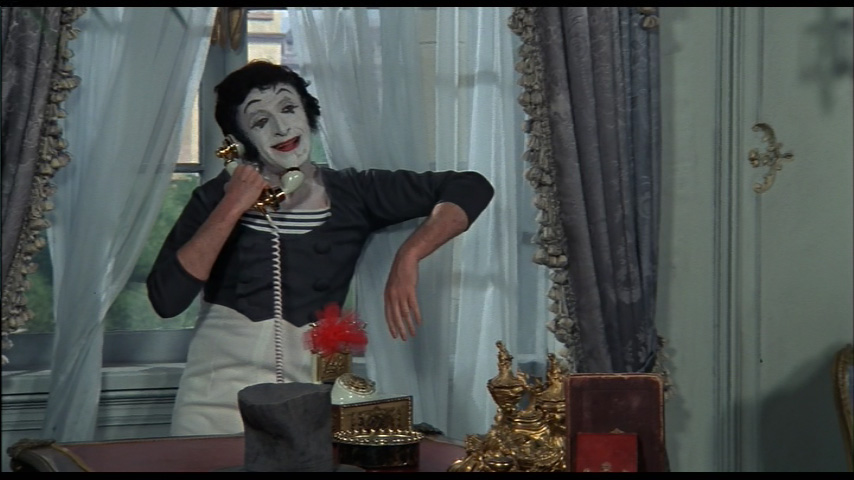
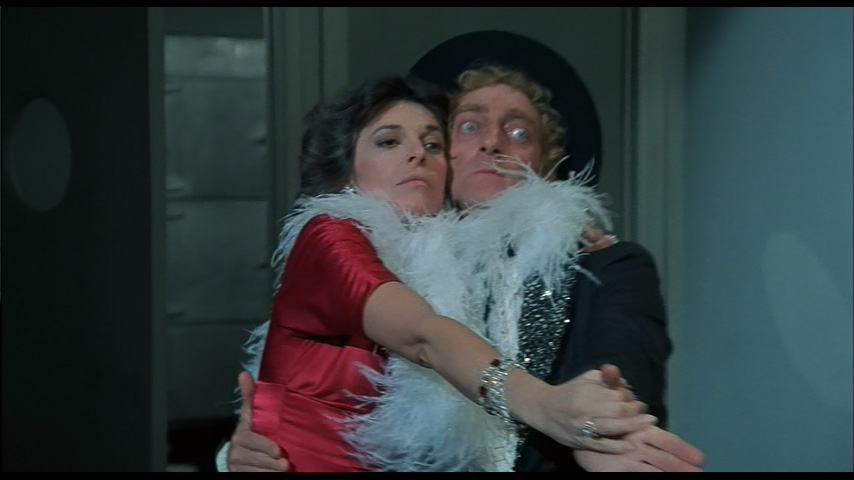

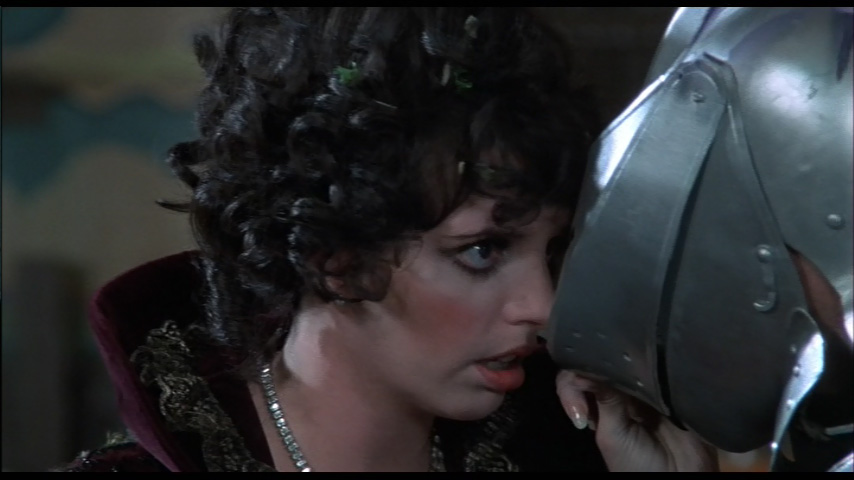
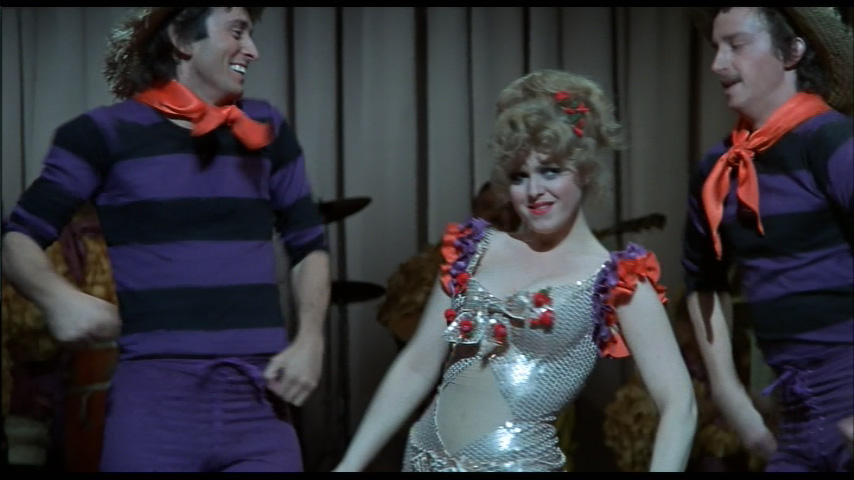



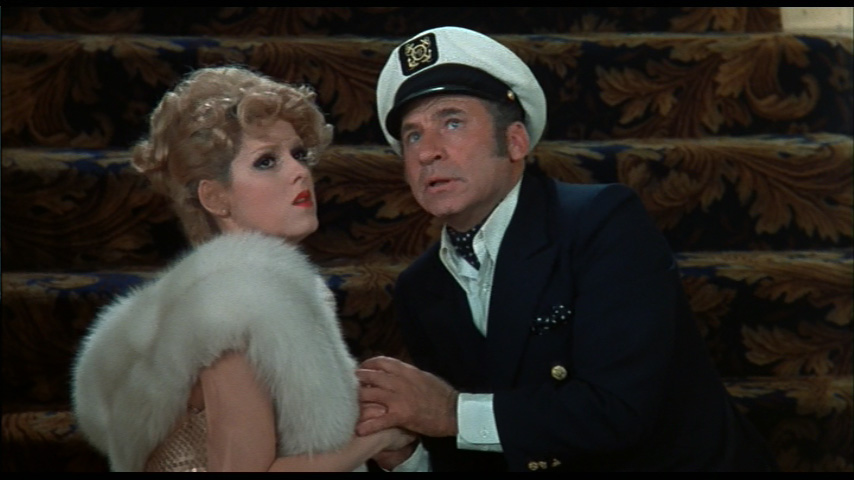
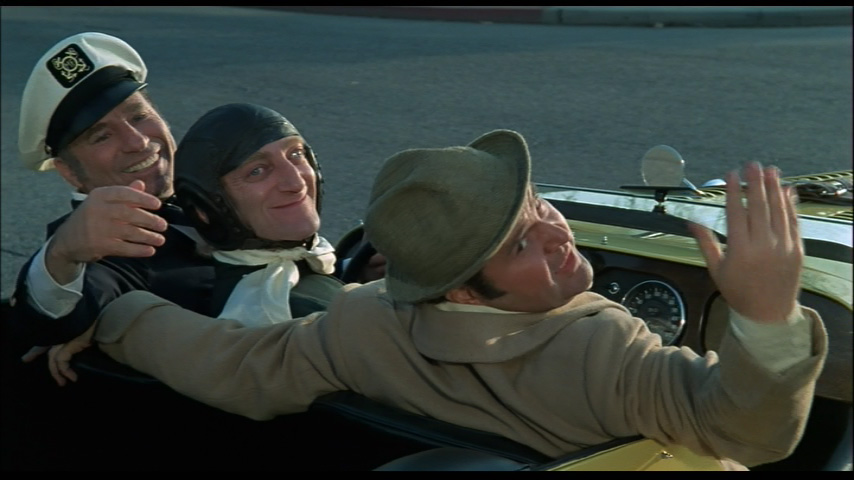

I was surprised to read that Mel Brooks had made a silent movie. I’m not a huge MB fan, but I will see if I can find it (for free – I know, I’m cheap!).
Thanks for the info on title cards. I’ve always preferred fewer title cards, but never really knew why. Now I know! 🙂
Love the screen caps of the newspaper headlines.
You just have good silent movie instincts! 🙂
Been interested in seeing Silent Movie for a while, but I’m a little hesitant due to the mixed reviews I’ve heard. While I love Mel Brooks, I will probably like it as much as you did.
Anyway, good review. Keep up the great work!
Thanks!